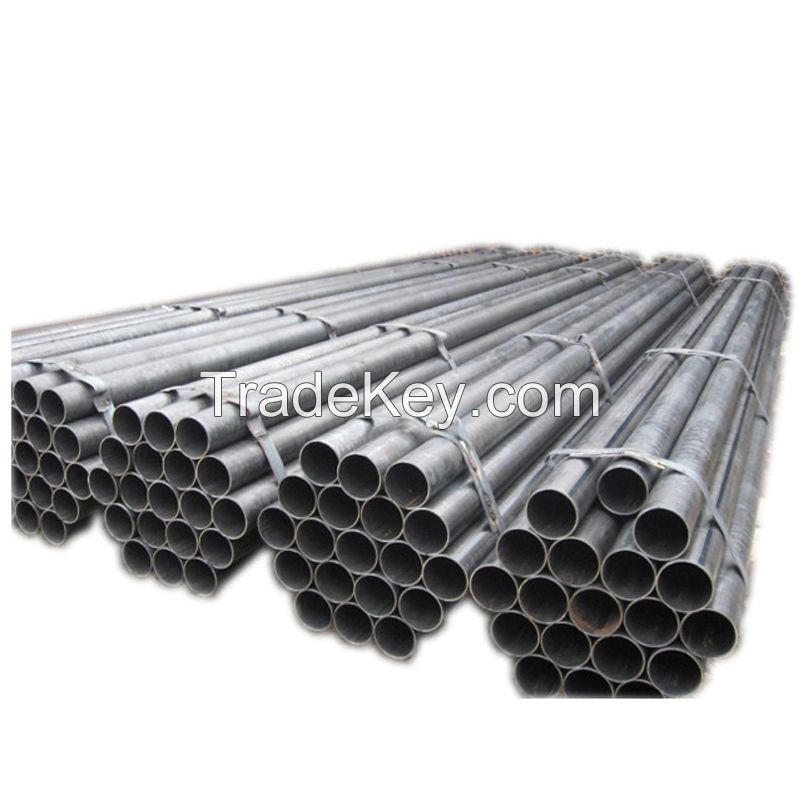Description
How to calculate a steel pipe theoretic weight
Measuring Out Diameter
The weight of a pipe depends on the weight density of the
material that composes the pipe as well as the physical volume of
the pipe. Weight density measures the amount of compactness of the
pipe material expressed in pounds per cubic foot.
The volume of a pipe equals its surface area times its
thickness. Specifically, the surface area of a pipe is the
same as a cylinder and equals the number of square inches
that can cover the curved sides of the pipe.
Calculate the weight of round pipe and Special Section Tubes
T.W.=*4.*5*(1.*6*SW*1.*1*S)*S/***0
Gather the necessary information.
You will need to know the outside diameter of the pipe. This is the
distance of a straight line that runs through the center of
the pipe and connects two points on the pipe\'s surface. You will
also need to know the wall thickness of the pipe. Both of these
measurements should be taken in inches. The final thing that you
will need to know is the length of the pipe. This last measurement
should be taken in feet.
Subtract the pipe\'s wall thickness from the pipe\'s outside
diameter. For example, if you had a pipe with
a diameter of six inches and a wall thickness of two
inches, you would subtract two from six to get four.
Pipe Weight Calculator -Â Imperial and Metric
Pipe Weight Formula -Â This formula can be used to determine
the weight per foot for any size of pipe with any wall
thickness.
The imperial formula is:
Wt/Ft =Â *0.*9*(OD -Â Wall Thickness)*Wall Thickness
The weight of any tube can be calculated with the following
formulas. Simply multiply the appropriate alloy density by the
calculation shown below of the required part.
| Imperial |
Example |
| density (lbs/in³) |
0.**4 lbs/in³ |
| x |
| (OD² - (OD - 2xT)²) |
(3.0 in² - (3.0 in - 2x0.**2
in)²) |
| x |
| Length |
*2in |
| x |
| π/4 |
| = |
| weight |
0.**2Â Â lbs |
* Totals should be used as an estimate of weight.
| Metric |
Example |
|
| density (g/cm³) |
7.*5g/cm³ |
| x |
| (OD² - (OD - 2xT)²) |
(*0.0 mm² - (*0.0 mm - 2x1.0
mm)²) |
| x |
| Length |
1m |
| x |
| π/***0 |
| = |
| weight |
1.**9 kg |
* Totals should be used as an estimate of weight.to change this
html
Wall thickness tolerance of steel pipe
Seamless pipes are extensively applied for the nuclear device, gas,
petrochemical, ship building and boiler industries. seamless pipes
dominates *5% of market share in Chinese boiler industry.
| Types |
Sizes |
allowed
tolerance |
| Ordinary steel pipe |
Senior steel pipe |
| Hot rolled |
Out diameter |
<*0</td> |
± 0.*0 mm |
± 0.*0 mm |
| ≥*0 |
± 1 % |
± 0.*5 % |
| Wall thickness |
<4</td> |
± *2.5 % |
± *0 % |
| ***0 |
**5%
**2.5%
 |
± *0 % |
| ≥*0 |
± *2.5 % |
± *0 % |
| Cold drawn |
Out diameter |
***0 |
± 0.*0 mm |
± 0.*0 mm |
| >****0 |
± 0.*0 mm |
± 0.*0 mm |
| >****0 |
± 0.*5 mm |
± 0.*5 mm |
| >*0 |
± 1 % |
± 0.5 % |
| Wall thickness |
≤1 |
± 0.*5 mm |
± 0.*2 mm |
| **3 |
+ *5 %
- *0 %Â |
± *0 % |
| >3 |
+ *2.5
- *0 % |
± *0 % |
Contact:
Â
Is seamless pipe stronger than welded?
Welded pipes are typically more cost effective than their seamless
equivalents. Welded pipes are usually more readily available than
seamless. The longer lead time required for seamless pipes can not
only make timing problematic, but it also allows more time for the
price of the materials to fluctuate
Â
Â
